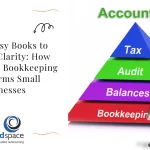Understanding True Up In Accounting: A Comprehensive Guide
In the world of finance and accounting, accuracy is crucial. One key concept that ensures financial records remain precise is true-up accounting. But what exactly does this term mean, and why is it important for businesses? In this comprehensive guide, we will define true up, explore its significance, and understand how businesses use this process to maintain financial accuracy.
What is True Up in Accounting?
The term true-up meaning in accounting refers to the process of adjusting financial records to reflect actual figures at the end of a specific period. Companies often estimate revenues, expenses, or liabilities, which may differ from the actual amounts. The truing up accounting process helps correct these discrepancies, ensuring that financial statements remain accurate and compliant with accounting standards.
Must Read : Mastering Journal Entries: Essential Guide with Examples
True Up Accounting Definition
To define true up formally, it is the reconciliation of estimated and actual financial figures in a company’s books. This adjustment can apply to payroll, taxes, expenses, revenue recognition, and other financial transactions.
Why is Truing Up Accounting Important?
The trued-up meaning in accounting highlights its importance for businesses. Here’s why companies rely on the true-up process:
- Accuracy in Financial Statements – Ensures that reported figures reflect actual financial conditions.
- Compliance with Regulations – Helps meet accounting standards like GAAP (Generally Accepted Accounting Principles) or IFRS (International Financial Reporting Standards).
- Better Decision-Making – Provides management with accurate data for strategic planning.
- Tax and Payroll Adjustments – Ensures that taxes and employee salaries are correctly calculated and paid.
Suggested Read : Accounting’s Vital Role in Import-Export Business
Common Scenarios Where True Up is Used
1. Payroll True Up
At the end of a financial period, companies compare estimated payroll expenses with actual figures. If adjustments are needed, they true up the payroll expenses to reflect the correct amounts.
2. Tax Adjustments
Businesses estimate tax liabilities throughout the year. When actual tax figures are determined, they adjust the financial records accordingly through a truing-up accounting process.
3. Revenue Recognition
Some companies recognize revenue based on estimates. At the end of a period, they may need to true up their revenue to match the actual income earned.
4. Expense Adjustments
A business may allocate an estimated budget for certain expenses. If actual spending differs, they adjust their books to reflect the correct amount.
Suggested Read: From Manual to Cloud: The Evolution of Payroll Processing
How to Perform a True-Up Adjustment
The process of truing up accounting involves several key steps:
- Review Financial Estimates – Compare estimated figures with actual amounts.
- Identify Discrepancies – Determine the difference between estimated and actual values.
- Make Adjustments – Update the financial records by making necessary journal entries.
- Verify Compliance – Ensure adjustments align with accounting standards.
- Document Changes – Maintain proper records of the true-up process for audits.
Suggested Read: How AI and Automation Are Shaping the Future of the Accounting Industry
Conclusion
Understanding true-up accounting definition is essential for businesses aiming to maintain accurate financial records. The process of truing up accounting ensures compliance, improves decision-making, and provides a clear financial picture. Whether adjusting payroll, taxes, or expenses, the true-up meaning in accounting remains a vital practice for companies of all sizes.
By implementing an effective trued-up meaning process, businesses can prevent financial discrepancies and enhance overall transparency in their financial reporting.


